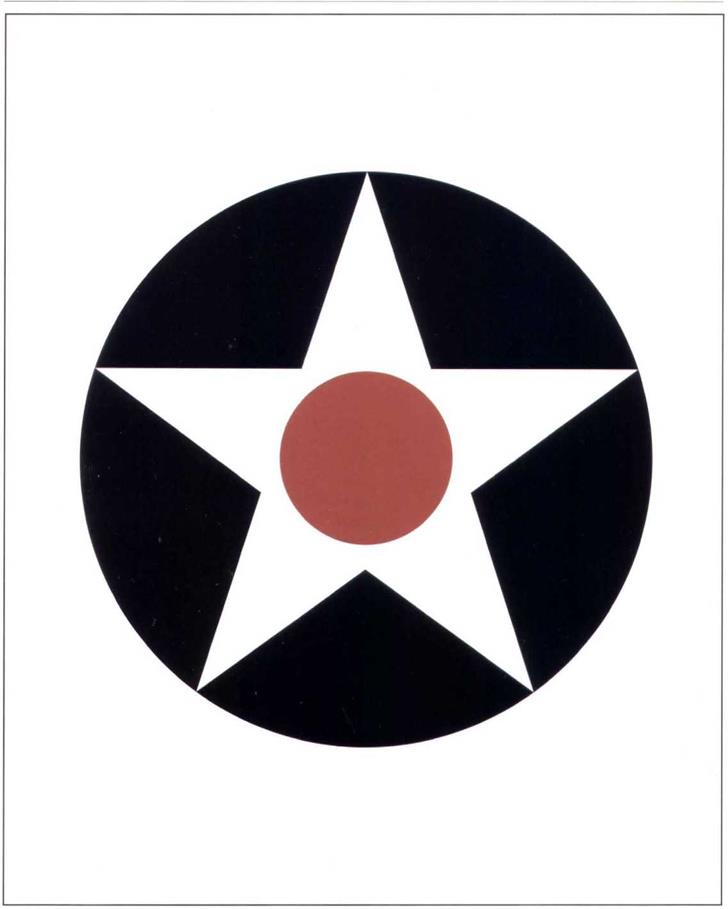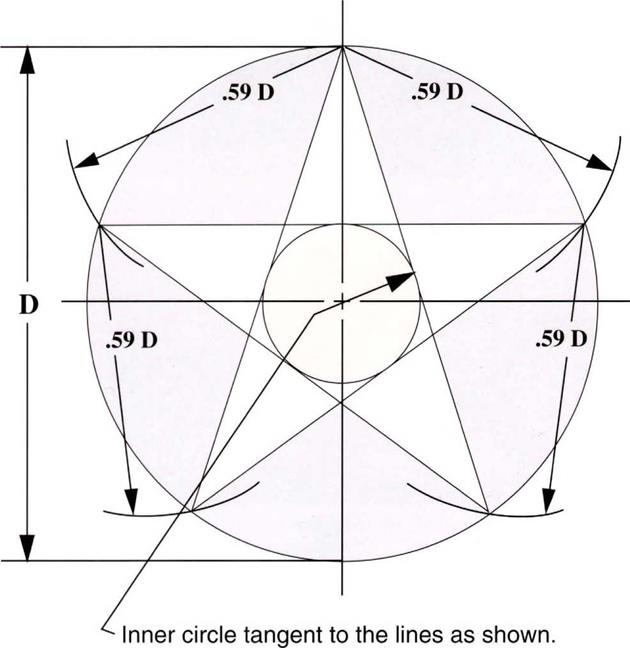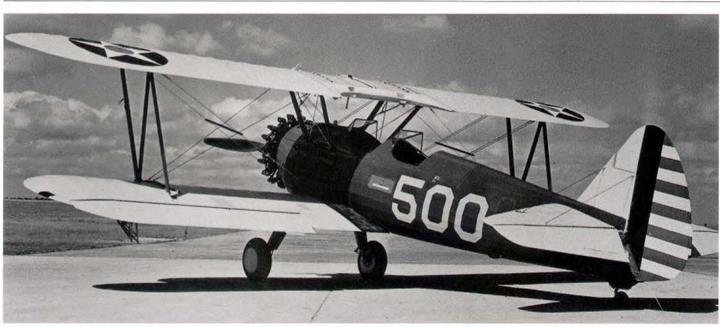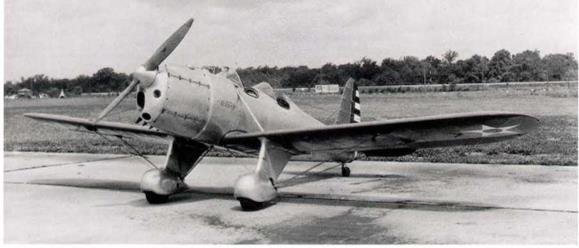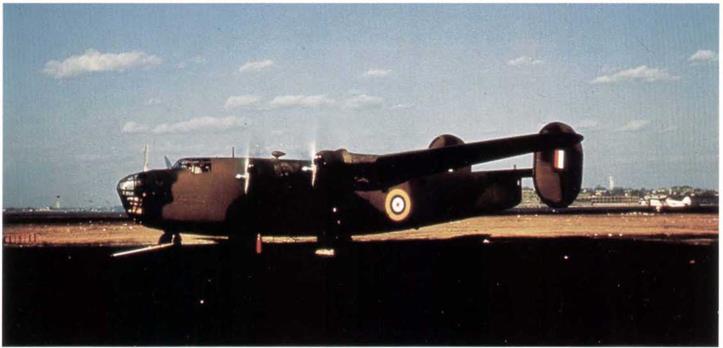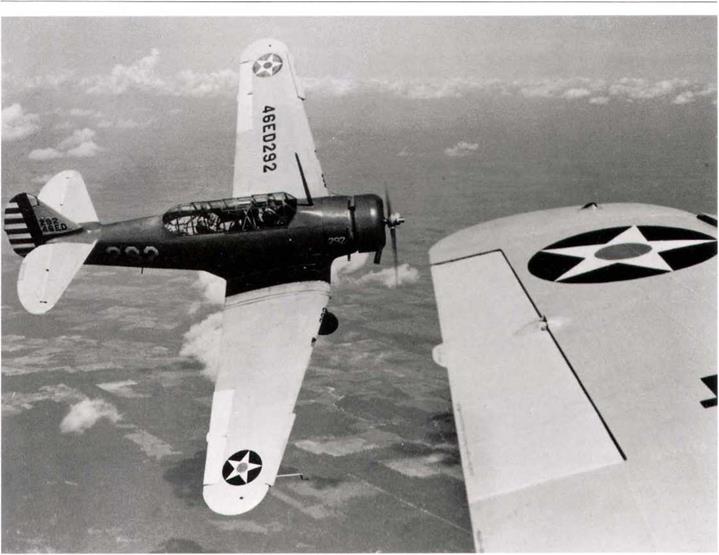STANDARD INSIGNIA (Specifications 98-24102 and 24114)
The T. O. called for standard insignia to be used as required in Spec. 98-24102, or Spec. 24114 for camouflaged airplanes.
Spec. 98-24102-K was issued on November 1, 1935. As it so happened, this was also the last letter issue on this specification prior to World War II.
Although the design of the insignia on both wings and rudders remained exactly as before, several detail requirements were changed. For insignia on the wings, a new requirement was added that when the wing covering was both fabric and metal, the available chord length was to be that of the metal covered portion only.
This requirement was caused by the newer aircraft that were coming into service, which had metal covering over the forward portion of the wing and fabric on the aft portion. The effect of this was to effectively reduce the size of the national insignia as a proportion of the total wing chord, and this can be seen on many aircraft of the period. The requirement for the size of the available chord and maximum diameter and positions, remained exactly as before.
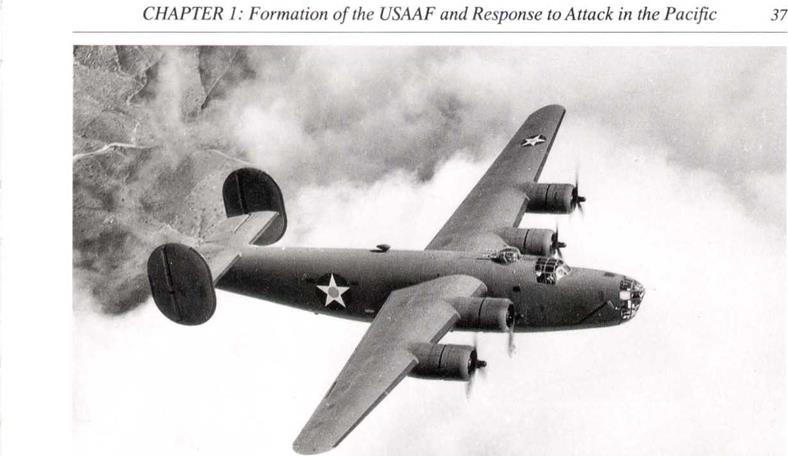
|
|
|
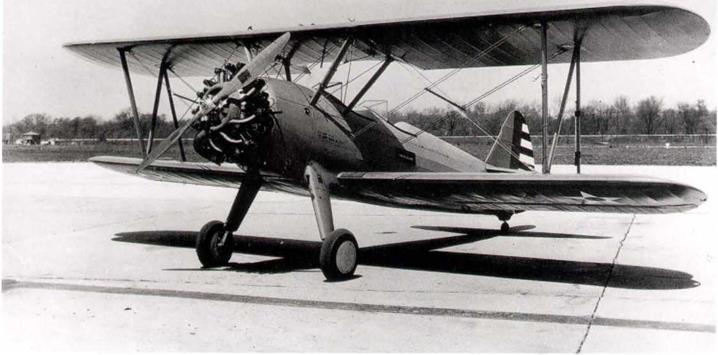
|
|
|
|
|
|
|
|
|
|
|
|
|
|
|
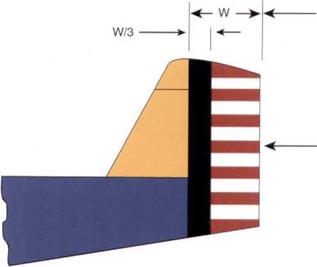
|
|
Stearman PT-13A al Randolph Field was one of ninety-two PT-13s and was used by the Stage Commander. Finished in the then standard trainer finish to Spec. 24113-A, it was nick-named the “Gray Ghost” or the “Washing Machine”, presumably as it was used when trainees either passed or washed-out in their primary training course.(USAF)
|
|
Fairchild PT-19s of an unidentified school squadron at Oakland in 1941. They are finished in the gloss True Blue and Orange Yellow trainer aircraft scheme per Spec. 24113-A. (William L. Swisher)
|
|
Ryan XPT-16, 39-717, at Wright Field forevaluation. This Is the first XPT-16, powered by a 125hp Menasco C4 inline engine. It was originally registered commercially as NC18907. Natural metal finish with insignia to Spec. 24102-K. This was the first monoplane primary trainer ordered by the Army.(Harry Gann)
For wings without ailerons, the requirements were changed so that the insignia was to be located on the metal covering tangent to the joint between the metal and fabric covering on wings where both fabric and metal were used for the wing covering.
The rudder design remained as before, with be seven red and six white stripes. It was also required that the surfaces of devices attached to the rudder, such as trim tabs, should be finished to blend with the adjacent surfaces of the rudder.
Amendment No. 2 to Spec. 98-24102-K, dated February 9, 1939 changed the insignia colors to conform to the new A-N Aircraft Color Standards (See Chapter 7).
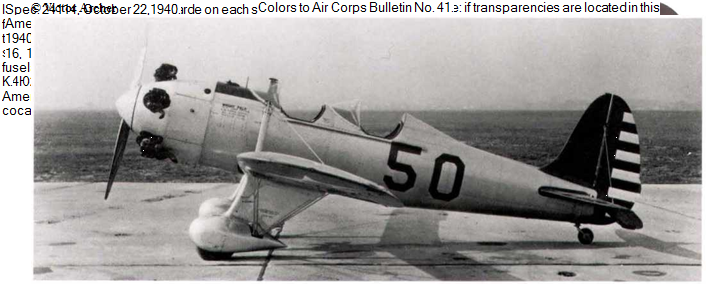 |
Major changes were made in 1940 to the national insignia positions and placing, as a result of the decision to camouflage combat aircraft. Spec. 24114s requirements for insignia stated that one cocarde was to be applied on the upper surface of the left wing and one on the under surface of the right wing of the airplane. The design and dimensions of the wing cocarde were to conform to Spec. 98-24102. One cocarde was to be applied on each side of the fuselage midway between the vertical projections of the trailing edge of the wing and the leading edge of the horizontal stabilizer. If transparencies were located in this area, the cocardes could be moved forward or to the rear as directed by the Air Corps Procuring Agency.
Ryan PT-20A-RY, 40-2416, with a Kinner R-440-1 engine. This was the last PT-20A-RY of a hatch of 27 re-engined PT-20s. Natural metal finish to Spec. 24113-A, (Harry Gann)
|
Ryan PT-21-RY, 41-1881, the first one of 100, at Wright Field forevaluation. This was the result of the AAF discarding the Menasco engine and replacing it by the KJnner R-440-3 engine. All subsequent PT-21s had the radial engine. Finish was the same as the PT-20A. (Harry Gann) |
The diameter of the circle for the fuselage cocarde was to be three-quarters of the length of the projection of the fuselage side. The design was to conform to Spec. 98-24102. All vertical tail surfaces, including the rudder, or rudders, were to be camouflaged and were not to have any insignia.
Insignia were to be applied with camouflage lacquer Spec. 14105 to metal surfaces, or with fully pigmented camouflage dope, Spec. 14106 to fabric surfaces. The colors were to conform to Bulletin 41 (see Chapter 7).
Thus, the newly camouflaged combat aircraft of the service had a completely revised placement of the national insignia. This was the first time that the service had used only one cocarde on the top and bottom of the wings, as suggested in McCook Field Report No, 1305 of 1920. (Although several more changes were to be made in the design of the national insignia in subsequent years, their positioning has remained basically the same to date).
All non-combat aircraft, i. e. those which were not camouflaged, retained the cocarde and rudder stripes as specified in Spec. 98- 24102-K and amendments. Thus, the USAAF entered World War 11 with its combat and non-combat aircraft bearing national insignia in different positions. This was to be duly changed at a later date.
|
Consolidated LB-ЗОЛ, aircraft AM259, was the second one produced, and is seen running up at San Diego, California, in December 1941. It is finished in the then current RAF heavy bomber scheme. The colors were Dark Earth, Dark Green and Night (only on bottom of fuselage). (USAF) |
|
North American BT-9 trainer of the 46th SS, aircraft no. “292", in the standard trainer finish of gloss A-N True Blue and Orange Yellow. (USAF) |











